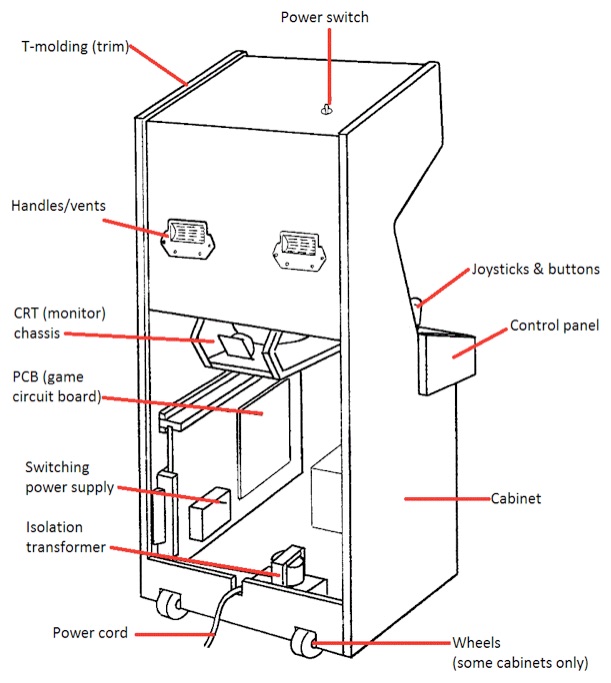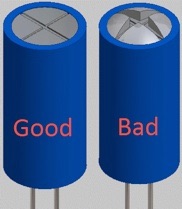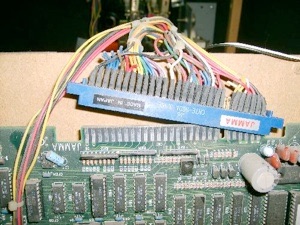Guide to buying old arcade games
One of the coolest things to have in your home is a real video arcade game - not only for the nostalgia, but for the massive amount of fun that you, your friends, and your family will have when playing it. A video arcade game can round out a rec room, basement, or garage more than anything else ;-)
I started seriously getting into arcade games last year - I’ve done tons of research prior to actually buying arcade machines for my own home, and I’ve learned a heck of a lot along the way (thank you Internet!). I hope to share some of what I’ve learned in this post to benefit those who are thinking of buying a home video arcade game (or additional ones).
When thinking about buying an arcade game, I highly recommend following these golden rules:
Rule #1 Don’t just buy any old arcade game.
Buy one that you and your friends and family will actually play. There are plenty of really crappy games out there (e.g. “The Pit” from 1982) that no one will want to play more than once. In fact, most arcade games fall into this category.
If you find an arcade game that you’ve never heard of, the first thing you should do is Google it - if there is a Wikipedia page on it, it is likely a “reasonably famous” game, and you’ll be able to find videos of people playing it on YouTube - check out those videos to see if the game sucks or not!
If you plan to buy an arcade game that you liked when you were younger, you’ll most certainly enjoy it immensely! However, keep in mind that many of the common/popular games such as Pac-man, Galaga, and Asteroids usually cost more. I’ve found plenty of arcade games that I absolutely love playing that I’ve never even heard of before - so don’t just limit yourself to the games you know.
Rule #2 - Be cheap.
Remember that you are buying an old arcade machine. The worst case scenario is that the monitor or circuitry could blow after a month (rare but possible) - so don’t spend a fortune on your first arcade.
Rule #3 Know the place/person you are buying the arcade from.
The best place to get arcades from in my experience has been local classified ads, more specifically, https://kijiji.ca. eBay isn’t a great place to buy arcade games (high prices and cost of shipping), but is a great place to buy arcade game parts that are high quality and cheap (usually from US, China and Britain).
If you are buying an arcade from a classified site, you have to be careful. Make sure there is a picture that clearly shows the arcade and the surroundings.
Is the arcade next to other arcade games in a basement or rec room? If so, then the person you are buying it from likely knows a lot about arcade games and won’t sell it cheap (if it is cheap, there is likely something wrong with it).
Is the arcade next to other arcade games in a commercial store of some kind, or in a dirty garage or filthy basement? If so, you can probably expect the machine to be pretty beat up or not taken care of well.
Also check the language used in the ad - you can almost always tell whether the person you are buying from knows much about arcade games from this wording. If they use specific terms such as JAMMA, cabinet, or control panel (discussed later), they probably know a great deal about arcade games. If they don’t, they probably don’t know what they have (which means you can get it pretty cheap ;-).
Rule #4 - Play and inspect the entire arcade game before buying it.
Make sure that all of the controls work the way they should, that the sound is loud, and that the picture on the monitor is bright and clear. Joysticks and buttons are cheap to replace (joysticks run about $14 new and buttons about $2 new), but CRT parts can be expensive, and a faint speaker is usually a sign of a problem with the video game circuit board.
You can also tell a great deal about the condition of an arcade game (and its past) from looking at it on the outside AND on the inside.
The next several paragraphs will guide you through how to inspect an arcade game properly. First, we must understand the different parts that you will find in a typical arcade game:

The power cord (A/C) is connected to an isolation transformer. You can think of the isolation transformer as a “buffer” - it cleans up the A/C power coming from the power cord and outputs reliable A/C power, which then goes to the switching power supply. The switching power supply then converts the A/C power to the 12V and 5V power needed by the video game PCB (printed circuit board) that holds the computer chips that comprise the game, as well as the CRT (cathode ray tube) monitor (sometimes the CRT is directly connected to the isolation transformer if it has it’s own power supply).
Take careful note of the condition of the isolation transformer - if it is very rusty, it means that the arcade has spent a great deal of time in humidity (e.g. outdoors, or in extreme hot/cold conditions). If this is the case, you will likely notice that some of the pins on the computer chips on the PCB have a bit of rust on them too - this usually means that the PCB won’t last for a long time after you buy the game (and the game is basically the PCB!).
Also take careful note of how dusty the switching power supply, PCB, and CRT monitor are. If there is a lot of dust, it usually means that it was stored in a bad environment. Usually dust doesn’t mean much if the game is in excellent working condition, but if the owner says it “has the occasional glitch”, then dust is probably causing short circuits and has likely damaged some components. You’ll need to vacuum the dust out of everything (and use compressed air on the PCB).

Next, check the circuit boards surrounding the CRT monitor (there should be at least two of them). Specifically look at the condition of the capacitors. The tops of each capacitor should be flat - if you see capacitors that are bulging or leaking (as shown to the right), the monitor needs a “cap kit”, which should only be done by someone qualified and will usually cost you about a hundred dollars.
Next, check the condition of the cabinet. Looks for chips, scratches or dents. Check the coin doors for excessive rust, dents or scratches, and also check the T-molding for nicks. Many of these things can be repaired with sandpaper, paint and glue, but it is better if you don’t have to do it. T-molding is very cheap to replace (about $0.30 per foot).
Also look for signs of wood rotting along the bottom of the case (or wood bulging if the cabinet is made from pressboard). If there is wood rotting/bulging, the machine was stored outside at one time, and the cabinet wood is weak as a result - I would pass on buying the arcade in this case.
Next, check the condition of the artwork - at minimum, a video game should have a marquee at the top facing the player that has a light behind it. Over time, the semi-transparent plastic used for the marquee can become burnt or warped by this light. You can find original or reproduction marquees for most common games on eBay or other Internet sites, but the prices will range around $20-$60. Also, for many popular games, you can get replacement artwork for the sides of the cabinet or lower front of the cabinet (called the kickplate), but this will run you about $100-200. I wouldn’t do this unless the artwork is in really bad condition (from people keying it, etc.).

JAMMA or non-JAMMA?
The wiring within an arcade cabinet connects the PCB to the CRT monitor, switching power supply, and controls. The size and pin-out connections for this wiring was standardized around 1986-1987 with the introduction of the JAMMA (Japanese Amusement Machinery Manufacturers Association) standard.
If the game was made before this time (non-JAMMA), the connector on the PCB will be about 4 inches long and the pinouts will be unique to the game/manufacturer.
If the game was made after this time, it will likely use a JAMMA connector that is about 5 inches long and standard JAMMA pin-outs as shown to the right. The benefit of buying a JAMMA game is that you can easily buy another JAMMA arcade PCB from eBay, put it in your cabinet and play it (“plug-and-play”). Most arcades up until the early 2000s are JAMMA and typically the ones you are likely going to buy used today.
Now, on to the last golden rule:
Rule #5 - Take a cart and someone else when you pick it up.
Arcade games are far heavier and awkward to move than they look. A full-sized arcade cabinet is about 6 feet tall and weights upwards of 500 pounds (depending on the size of the CRT monitor). Also remember that there is a lot of wood in a typical arcade cabinet!
A Dodge Caravan (with the seats removed) is usually big enough to transport an arcade game. Also make sure that the cart you use has a 1000 pound capacity and large air-filled rubber wheels to get over steps properly with a big arcade cabinet on it.
If you are worried about this because you don’t have a large vehicle or adequate space in your home, then you may want to search for an arcade game with a cocktail-style cabinet or a cabaret-style cabinet (shown below). These are much harder to find, as fewer were produced, and they are in higher demand by home collectors (for obvious reasons).
